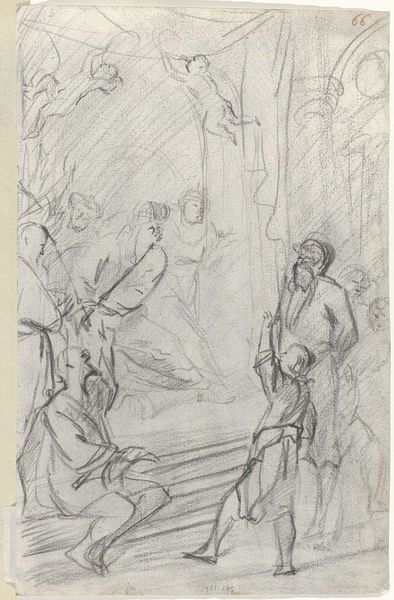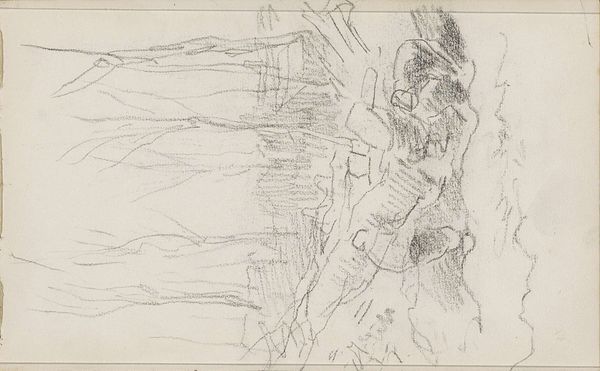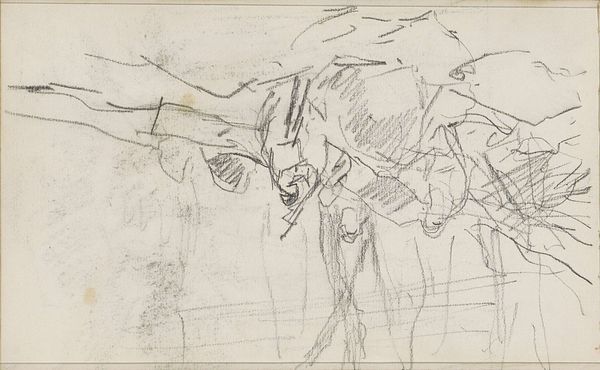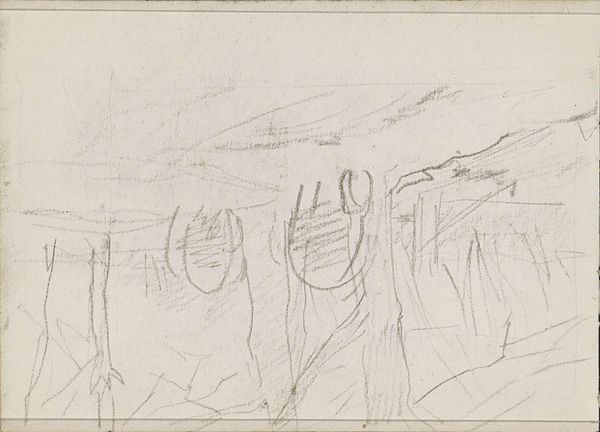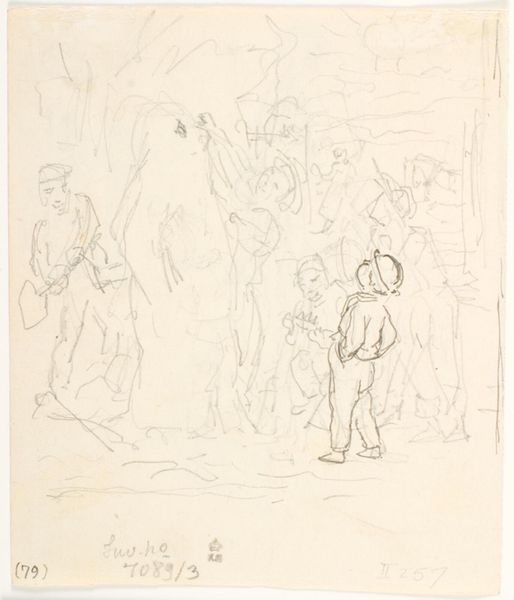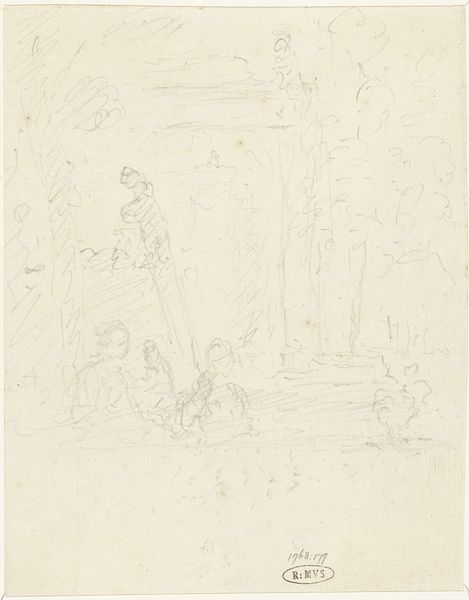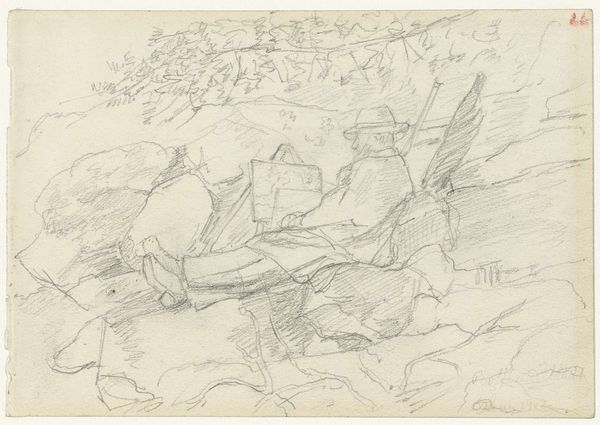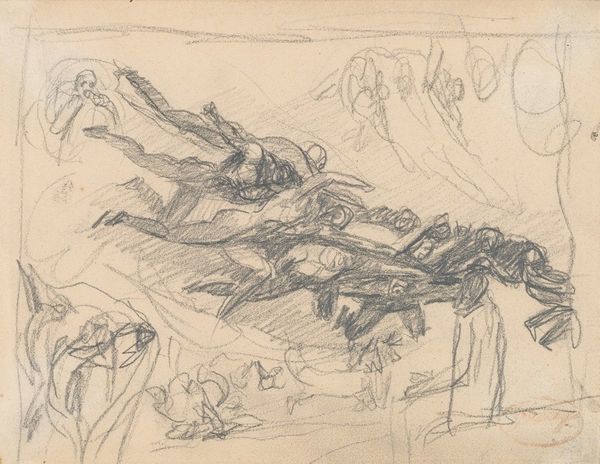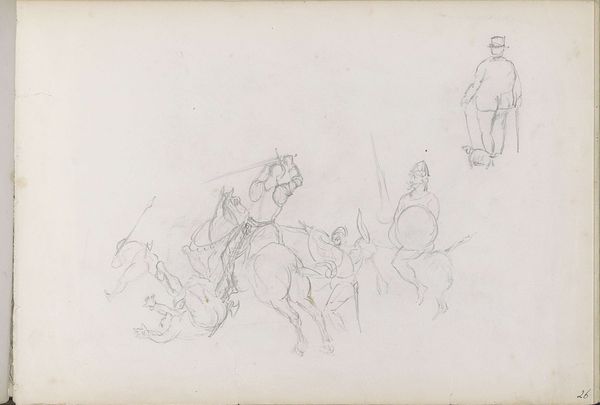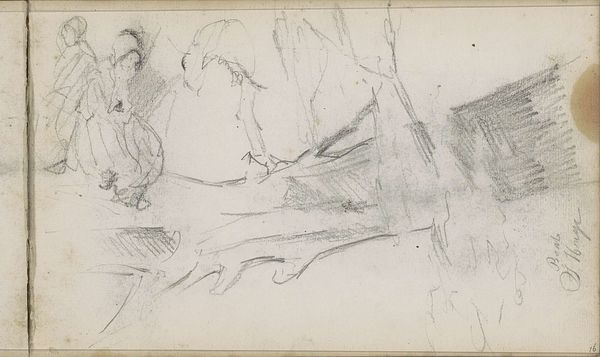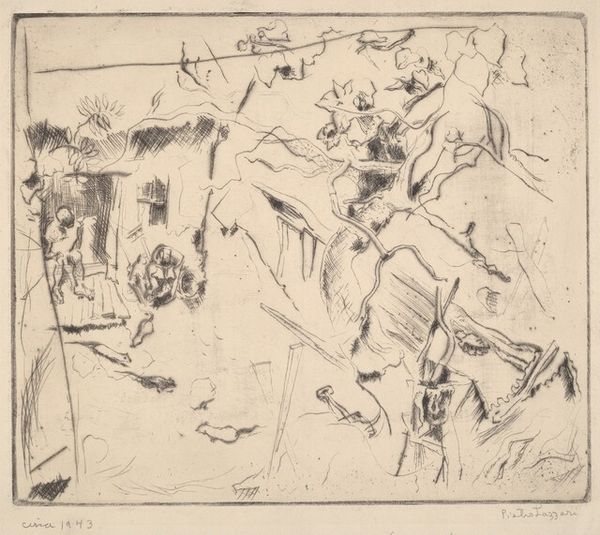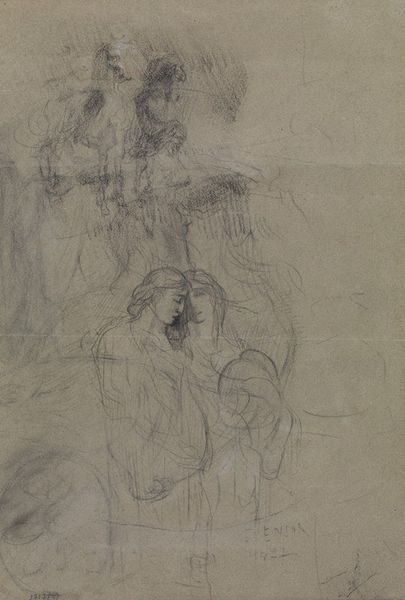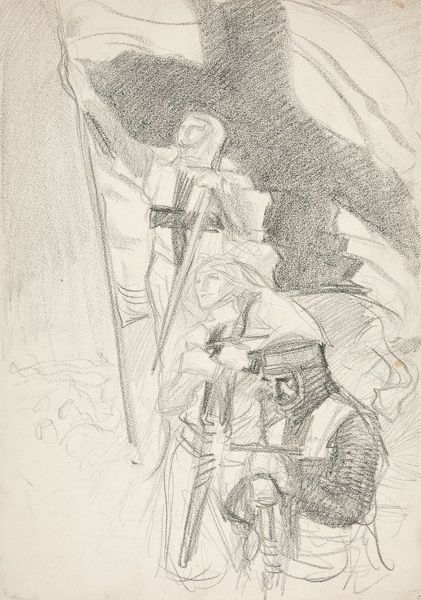
drawing, pencil
#
drawing
#
narrative-art
#
baroque
#
figuration
#
pencil
#
history-painting
Dimensions: height 290 mm, width 197 mm
Copyright: Rijks Museum: Open Domain
Editor: This is "Paulus lijdt schipbreuk voor de kust van Malta (?)," or "Paul's Shipwreck off the Coast of Malta(?)," a pencil drawing by Pieter Fransz de Grebber, created sometime between 1610 and 1652. It feels like a chaotic jumble of figures in a storm. What do you see in this piece, especially regarding the narrative? Curator: I see a powerful visual depiction of the Apostle Paul’s shipwreck, as recounted in the Book of Acts. Consider how the Baroque period often embraced drama and emotional intensity. De Grebber uses these figures—almost archetypes—to represent struggle and divine intervention. Notice how some reach towards the light, perhaps signifying hope and salvation, even amidst the chaos. What symbols jump out at you? Editor: Well, the figure carrying something on their head looks rather determined, maybe suggesting survival instinct? And those reaching towards the 'light,' as you said, do convey hope. But why Malta? Curator: Malta, in this context, holds significant religious symbolism. Paul's survival there is seen as a testament to his faith and divine protection. The shipwreck itself becomes a symbol of trials overcome through belief. De Grebber's choice to depict this moment underscores the cultural memory of faith's triumph over adversity, something resonant for the intended audience. Do you get a sense of that resonance? Editor: I think so. It's less about the historical event itself and more about what it *represents* – faith, perseverance, that kind of thing. It's pretty interesting how the symbols connect to the culture of the time. Curator: Precisely. These aren't just lines on paper; they're carriers of cultural and psychological weight, speaking to deep-seated beliefs. Looking closely has helped reveal layers of meaning, wouldn't you agree? Editor: Definitely. I'll never look at a "simple" drawing the same way again. Thanks for opening my eyes to the symbolism embedded within!
Comments
No comments
Be the first to comment and join the conversation on the ultimate creative platform.
